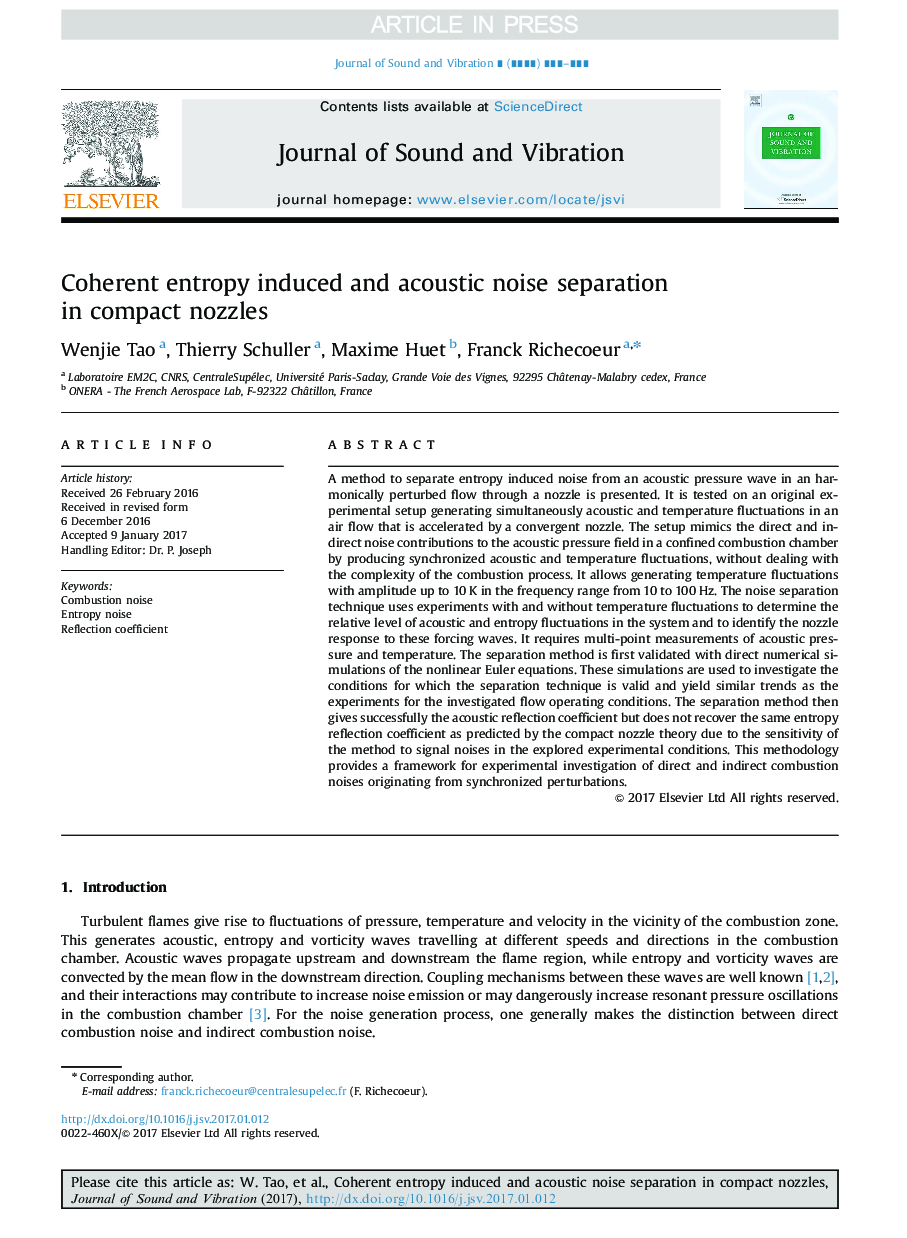| Article ID | Journal | Published Year | Pages | File Type |
|---|---|---|---|---|
| 4924309 | Journal of Sound and Vibration | 2017 | 19 Pages |
Abstract
A method to separate entropy induced noise from an acoustic pressure wave in an harmonically perturbed flow through a nozzle is presented. It is tested on an original experimental setup generating simultaneously acoustic and temperature fluctuations in an air flow that is accelerated by a convergent nozzle. The setup mimics the direct and indirect noise contributions to the acoustic pressure field in a confined combustion chamber by producing synchronized acoustic and temperature fluctuations, without dealing with the complexity of the combustion process. It allows generating temperature fluctuations with amplitude up to 10Â K in the frequency range from 10 to 100Â Hz. The noise separation technique uses experiments with and without temperature fluctuations to determine the relative level of acoustic and entropy fluctuations in the system and to identify the nozzle response to these forcing waves. It requires multi-point measurements of acoustic pressure and temperature. The separation method is first validated with direct numerical simulations of the nonlinear Euler equations. These simulations are used to investigate the conditions for which the separation technique is valid and yield similar trends as the experiments for the investigated flow operating conditions. The separation method then gives successfully the acoustic reflection coefficient but does not recover the same entropy reflection coefficient as predicted by the compact nozzle theory due to the sensitivity of the method to signal noises in the explored experimental conditions. This methodology provides a framework for experimental investigation of direct and indirect combustion noises originating from synchronized perturbations.
Related Topics
Physical Sciences and Engineering
Engineering
Civil and Structural Engineering
Authors
Wenjie Tao, Thierry Schuller, Maxime Huet, Franck Richecoeur,
